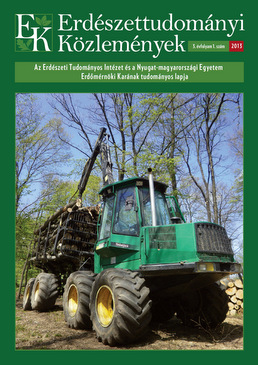Research of various sources of light’s effect on insects in different illuminatedareas with Jermy-type light-trap
Edit Nagy Pintérné
Correspondence
Correspondence: Pintérné Nagy Edit
Postal address: H-9400 Sopron, Kertvárosi utca 3.
e-mail: epinter[at]emk.nyme.hu
Abstract
The forest monitoring network is important instrument of forest protection in Hungary. Its main task is the registration of damage occurred in Hungary’s forest and to provide prognosis. The light-trapping network has an important role in the monitoring system, especially in the prognosis of insect/pest population fluctuation. The light-trap method is based on the insects’s behaviour to fly to artificial light, therefore it can also be used to examine light pollution. Light pollution is the result of using artificial light and can lead to change in insect behaviour and reproduction. The aim of this study was to examine the effect of light pollution on insect behaviour using three different type of lights. The investigation was done with Jermy-type light-trap from June to August, and the tests were done according to the moon phases. The trap captures varied strongly. Flies (Diptera), cicadas (Hemiptera) and moths (Lepidoptera) were eudominant and dominant in the traps. There is a significant relation between the ligth-sources and insect orders, further between the light sources types and the examination areas.
Keywords: light-trapping, light pollution, insects
Open Acces
For non-commercial purposes, let others distribute and copy the article, and include in a collective work, as long as they cite the author(s) and the journal, and provided they do not alter or modify the article.
Cite this article as:
Pintérné, N. E. (2013): Research of various sources of light’s effect on insects in different illuminatedareas with Jermy-type light-trap. Bulletin of Forestry Science, 3(1): 239-249. (in Hungarian)
Volume 3, Issue 1
Pages: 239-249
First published:
28 June 2013
Related content
7
Related content in the Bulletin of Forestry Science*
* Automatically generated recommendations based on the occurrence of keywords given by authors in the titles and abstracts of other articles. For more detailed search please use the manual search.
